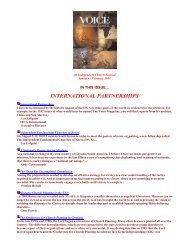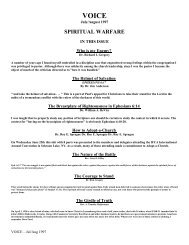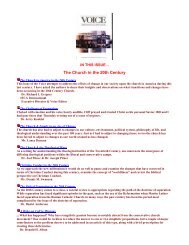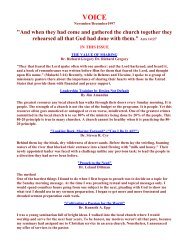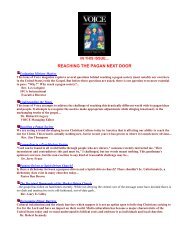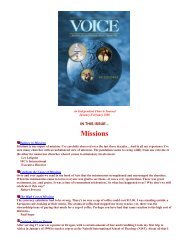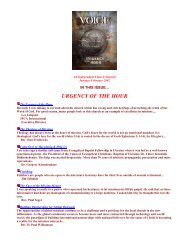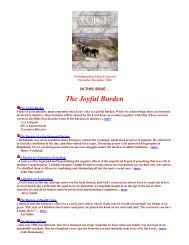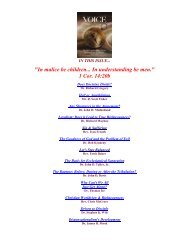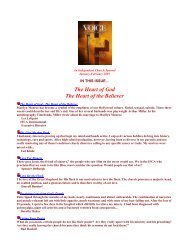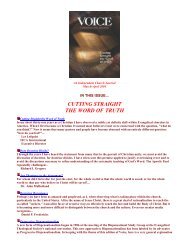IFCA REGIONAL LEADERS' HANDBOOK - IFCA International
IFCA REGIONAL LEADERS' HANDBOOK - IFCA International
IFCA REGIONAL LEADERS' HANDBOOK - IFCA International
You also want an ePaper? Increase the reach of your titles
YUMPU automatically turns print PDFs into web optimized ePapers that Google loves.
going to include power walking as part of my exercise routine,” is not nearly<br />
as measurable as, “I’m going to include power walking as part of my daily<br />
exercise routine” is measurable.<br />
Agreed Upon – Goals must be agreed upon/owned by those who are<br />
involved in reaching them. Everyone must understand the goal and be<br />
committed to reaching it.<br />
Realistic – This means that your goals must be attainable. A goal to include<br />
power walking for 30 miles as part of my daily exercise routine is not<br />
realistic. It is good to set goals that will require some hard effort to attain but<br />
unrealistic goals that are unattainable are meaningless and perhaps even a<br />
source of frustration.<br />
Time Specific – Open ended goals do not generate progress. Each goal<br />
should be time oriented. “By the end of 60 days, I’m going to be power<br />
walking for 3 miles as part of my daily exercise routine.” There is a Specific,<br />
Measurable, Realistic and Time Specific goal. The only element missing is<br />
“Agreed Upon.” Most of us will have to “work that out with our body” on<br />
THAT element!<br />
Remember, obstacles are those frightful things that you see when you take<br />
your eyes off the goal.<br />
The following outline can be used in formulating and atriculating the goals<br />
of your Regional. Set aside a good portion of time to meet with current and<br />
past Regional leaders and discuss these things together.<br />
<strong>REGIONAL</strong> GOALS ASSESSMENT<br />
1. List all the GOALS of your Regional which are currently recorded in printed<br />
form. Use the Regional constitution and other documents and/or literature<br />
to identify them<br />
2. Separate the list created in step #1 into “Short Term” and “Long Term” Goals<br />
3. Using only the lists created in steps #1 and #2, identify which GOALS fall<br />
into the following PURPOSE categories:<br />
Fellowship (Short Term/Long Term)<br />
Counsel & Guidance for Churches and Individuals (Short Term/Long<br />
Term)<br />
Cooperative Ministry (Networking) (Short Term/Long Term)<br />
Outreach Ministry (Short Term/Long Term)<br />
Any additional purposes previously identified in the evaluation of the<br />
Regional’s purpose.<br />
4. Evaluate each of your identified goals to determine whether they are<br />
“SMART” goals.<br />
53<br />
<strong>IFCA</strong> <strong>International</strong> Regional Leadership<br />
Handbook




